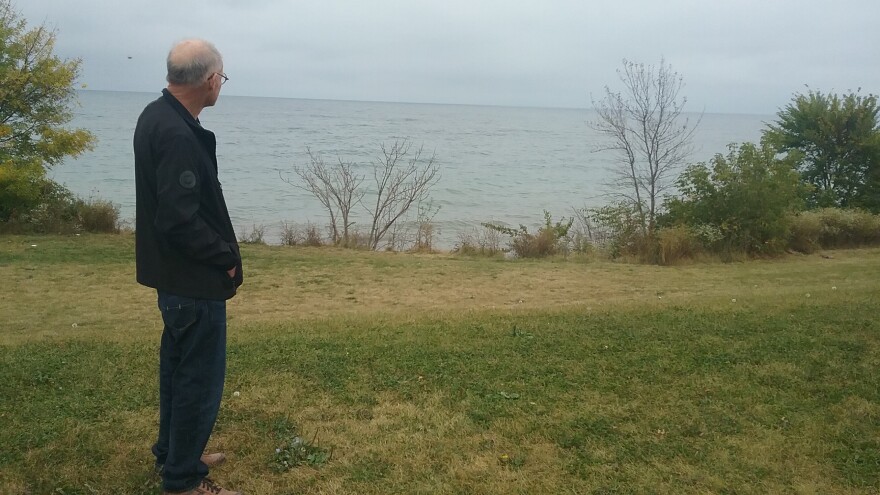The Love Rock holds a special place in many Milwaukeeans' hearts. And for those who have never heard of it, it is a pretty strange story.
“It was one of those Milwaukee curiosities in the '70s and early '80s," explains historian Mark Goff.
For starters, the Love Rock wasn’t really a rock. It was a large, rectangular block of concrete out about a half mile from Lake Michigan's shoreline. The concrete covered and protected a water works intake pipe. You could get a good view of it from Bradford Beach and from the former Milwaukee Gun Club, which is now a soccer field.
Mark says the concrete slab had been around for years, without people paying much attention to it. But he says some time in the 1960s, it became a prominent feature. According to legend, three hippies canoed to the rock one night and painted the word LOVE on it – in big block letters.

Mark remembers marveling at their bravery, and skills. “You had to have a boat, you had to know how to fasten it to the rock, it would seem to me that you would need a really, really calm day. It certainly wasn’t a work of art, but they got the lettering right and they were all the same size.”
He thinks LOVE was painted on the rock after one of the regular Sunday concerts that he and other hippies attended at the lakefront.
Pretty soon, Mark explains, people began referring to the block of concrete as the Love Rock. The name embodied the anti-war movement of the time, he says, and it also sent a message to the owners of the gun club - that guns and peace don’t mix.

“There was a lot of unhappiness with the gun club being down here. It didn’t work very well with the counter culture people next door, having the rock concerts," Mark says.
In the years that followed, people continued to paddle out to the rock, adding their graffiti. The big block letters spelling out LOVE remained the most visible message on the slab...and the name stuck.
But eventually, the Love Rock met its demise. And, that's where Bubbler Talk question asker Ann Frank of Milwaukee comes in. She is the one who asked WUWM to explore what happened to the Rock Love.
Bubbler Talk: What have you always wanted to know about the Milwaukee area?
The director of Milwaukee Water Works, Jennifer Gonda, says the concrete-covered intake pipe posed a danger for boats. "We stopped using it in 1918, we kept it as a backup until 1965. There was a lot of debate about demolishing it at that point and we decided to put off the expense because it was a pretty large expense at that time."
In the 1980s, the city set aside the funds. And in 1986, Jennifer says, workers stuck dynamite under the structure and blew it up.

Yet the spirit of the Love Rock lives on. A local beer was named after it, so was a sandwich. Lincoln Fowler, who owns the Colectivo Coffee Roasters and Cafes, says he has fond memories of seeing the Love Rock out in the lake, when he was growing up.
When his company, then known as Alterra, opened its cafe on the lakefront, "it made sense to try to bring a sandwich along that paid tribute to one of the iconic features of the lakefront, which was the Love Rock," Lincoln says.
The item wasn't very popular, so it was removed from the menu. But, he says reminiscing about the Love Rock has inspired him to create a new version of the sandwich.
Have a question you'd like WUWM to answer? Submit your query below.
_







